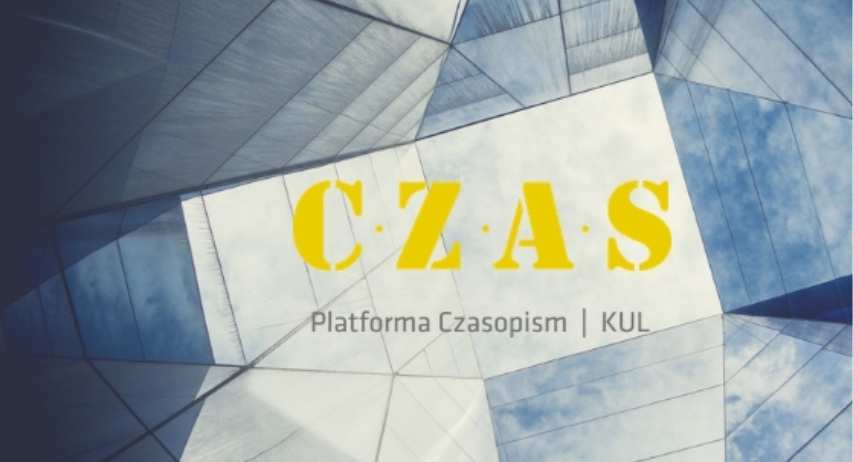Epitome Gai seu Liber Gai
Joanna Kulawiak-Cyrankowska
University of Łódź , Polandhttps://orcid.org/0000-0001-9498-4845
Kamil Florczak
University of Łódź , Polandhttps://orcid.org/0009-0006-5404-3438
Krystian Stacherski
University of Łódź , Polandhttps://orcid.org/0000-0002-3977-8608
Barbara Zambrzycka
University of Łódź , Polandhttps://orcid.org/0009-0002-7222-4700
References
Albers G., Zum Versprechen als Verpflichtungsgrund in der Spätantike: Urkundenpraxis, Kirchenlehrer und der westgotische Gaius, Zeitschrift der Savigny-Stiftung für Rechtsgeschichte. Romanistische Abteilung 2018, t. 135, nr 1. (Crossref)
Albertario E., Sulla „Epitome Gai”, w: Atti del Congresso Internazionale di Diritto Romano (Bologna e Roma XVII–XXVII aprile MCMXXXIII), t. 1, Pavia 1934.
Archi G.G., L’Epitome Gai: studio sul tardo diritto romano in Occidente, Milano 1937.
Besson A., La succession ab intestat dans le Liber Gai, w: Le Istituzioni di Gaio. Avventure di un bestseller, red. U. Babusiaux, D. Mantovani, Pavia 2020.
Caii Institutiones aniano auctore primum fragmentum, w: Le trésor de l’ancienne jurisprudence romaine ou collection des fragmens qui nous restent du droit romain, antérieur à Justinien, tłum. P.A. Tissot, Lamort (Metz) 1811.
Caji Institutionum Libri Duo, w: Corpo del diritto civile in cui si contengono le Instituzioni di Giustiniano, i Digesti o Pandette, il Codice, le Autentiche, ossiano Novelle Costituzioni, e gli Editti, non che le Novelle Costituzioni di Leone e di altri Imperatori, i Canoni De’ Santi e degli Apostoli e I Libri De’ Feudi con brevi note indicanti le leggi simili, quelle che a vicenda s’illustrano, le Contrarie e le abrogate, t. 4, red. F. Foramiti, Venezia 1844.
Codicis Theodosiani libri XVI quam emendatissimi, adiectis quas certis locis fecerat Aniani interpretationibus, Lugdunum 1566.
Conrat M., Die Entstehung des westgothischen Gaius, Amsterdam 1905.
Dernburg H., Die Institutionen des Gaius. Ein Collegienheft aus dem Jahre 161 nach Christi Geburt, Haale 1869.
Dictionnaire étymologique de la langue latine, red. A. Ernout, A. Meillet, Paris 1951.
Epitome Gai, tłum. J.M. Coma Fort, J.D. Rodríguez Martín, Madrid 1996.
Etymological Dictionary of Latin and the Other Italic Languages, red. M. de Vaan, Leiden–Boston 2011.
Fontes Iuris Romani Antejustiniani, II, red. J. Baviera, wyd. 2, Firenze 1968.
Hitzig H.F., Beiträge zur Kenntniss und Würdigung des sogen, westgothischen Gaius, Zeitschrift der Savigny-Stiftung für Rechtsgeschichte. Romanistische Abteilung 1893, t. 14, nr 1. (Crossref)
Jurisprudentia vetus ante-Justinianea, red. A. Schulting, Lipsiae 1737.
Kelly J.M., A Hypothesis on the Origin of „Mutuum”, Irish Jurist 1970, t. 5, nr 1.
Kuryłowicz M., Rozwój historyczny rzymskiej adopcji, Studia Iuridica Lublinensia 2011, t. 16.
Lambertini R., Sull’ “Epitome Gai” nel “Breviarium”, Labeo: rassegna di diritto romano 1995, t. 41, nr 2.
Leksykon rzymskiego prawa karnego. Podstawowe pojęcia, red. M. Jońca, Warszawa 2021.
Lex Romana Visigothorum ad LXXVI librorum manuscriptorum fidem recognovit […] prolegomenis instruxit Gustavus Haenel, Lipsiae 1849.
Lokin J.H.A., Quelques remarques sur l’Epitome Visigothique de Gaius, Tijdschrift Voor Rechtsgeschiedenis / Revue d’histoire Du Droit / The Legal History Review 1984, t. 52, nr 3. (Crossref)
Mantovani D., Sul Liber Gai. Trasmissione, forma, contenuti e storia degli studi, w: Le Istituzioni di Gaio. Avventure di un bestseller, red. U. Babusiaux, D. Mantovani, Pavia 2020.
Mantovani D., Tituli e Capita nelle Institutiones di Gaio e nell’Epitome Gai: Contributo allo studio del paratesto negli scritti dei giuristi romani, Seminarios complutenses de derecho romano 2015, t. 28.
Martini R., Qualche osservazione a proposito della c.d. „Epitome Gai”, w: Atti dell’Accademia romanistica costantiniana, t. 14, Napoli 2003.
Rodríguez Martín J.-D., A Handbook for Alaric’s Codification, Revue Internationale des Droits de l’Antiquité 1999, t. 46.
Rominkiewicz J., Zakaz kastracji w prawie rzymskim, Wrocław 2023. (Crossref)
Schiavo S., A proposito delle obligationes ex contractu nell’Epitome Gai, w: Ravenna capitale. Disciplina degli atti negoziali inter vivos nelle fonti di IV–VII secolo, Santarcangelo di Romagna 2019.
Schiavo S., Aspetti processuali nell’Epitome Gai, w: Ravenna capitale. Giudizi, giudici e norme processuali in occidente nei secoli IV–VIII, t. 2, Santarcangelo di Romagna 2015.
Scholtens J.E., Gaius Studies of the Humanists, Butterworths South African Law Review 1956, t. 3.
Skrzywanek-Jaworska D., Impossibilium nulla obligatio est Celsusa (D. 50,17,185) a początkowa niemożliwość świadczenia w prawie niemieckim, Studia Prawno-Ekonomiczne 2010, t. 81.
Tarwacka A., Czym jest adopcja, czym natomiast jest adrogacja oraz na ile różnią się one między sobą; a także – jakie i jakiego rodzaju są słowa tego, kto stawia przed ludem wniosek dotyczący adrogowania dzieci. Aulus Gellius, Noce Attyckie 5,19. Tekst – tłumaczenie – komentarz, Zeszyty Prawnicze 2014, z. 14.3. (Crossref)
University of Łódź https://orcid.org/0000-0001-9498-4845
License

This work is licensed under a Creative Commons Attribution 4.0 International License.
The Author declares that the Work is original and does not infringe any personal or proprietary rights of third parties, and that She/He has unlimited rights to the Work which are the subject of the Agreement signed with the Publisher.
Author of the publication transfers to the Publisher the economic copyrights to the Work (article) submitted for publication, free of charge, without time and territorial restrictions in the following fields of use:
a) production, recording and reproduction of the copies of the Work by a specific technique, including printing, magnetic recording and digital technology;
b) marketing, lending or rental of the original or copies of the Work, and distribution in the form of open access, in accordance with the license Creative Commons Attribution 4.0 International (also known as CC BY), available at: https://creativecommons.org/licenses/by/4.0/legalcode.pl;
c) inclusing the Work in the composition of the collective work;
d) publishing on the website of the journal, public performance, exhibition, display, reproduction, broadcasting and rebroadcasting, and making the Work available to the public in such a way that everyone can have access to them in a place and at a time chosen by them;
e) uploading the Work in an electronic form to electronic platforms or other uploading of the Work in an electronic form to the Internet or other network.
The proprietary copyright to the Work is transferred to the Publisher free of charge upon signing the contract wit the Publisher.







